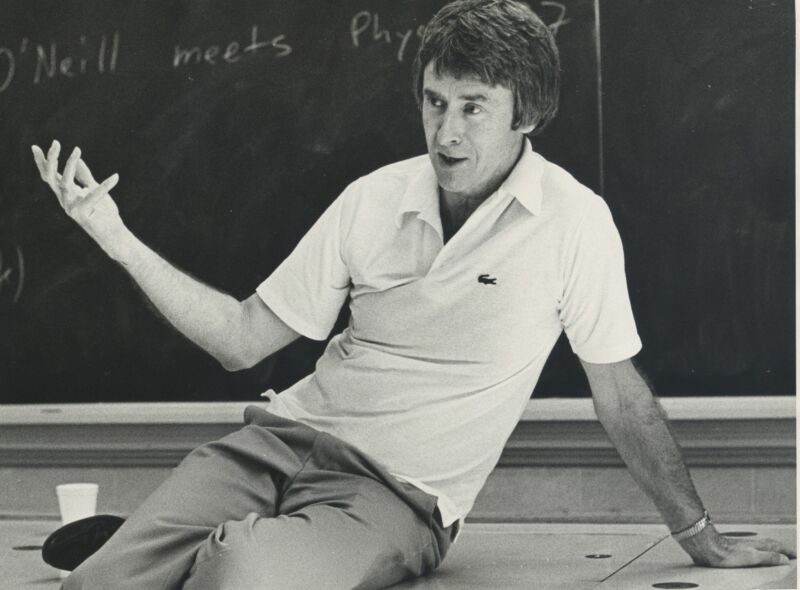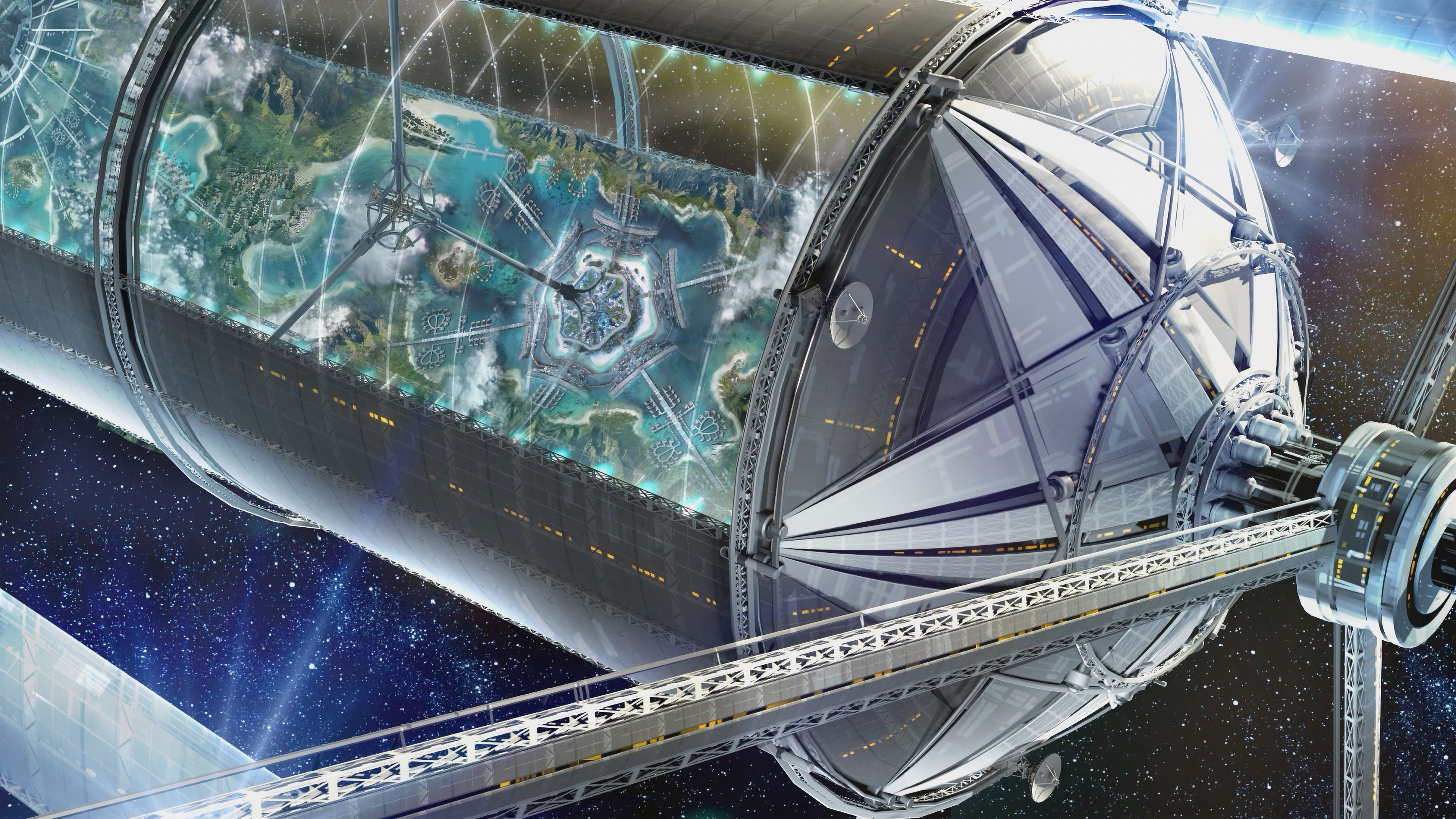
A new movie brings to life the legacy of a physicist who has played an influential—but largely unheralded—role in shaping the vision of space settlement.
The documentary The High Frontier: The Untold Story of Gerard K. O'Neill takes its name from the 1977 book The High Frontier: Human Colonies in Space authored by Princeton University physicist Gerard K. O'Neill. The movie will be released on April 17, and it's an excellent film for those seeking to better understand the future humans could have in outer space.
O'Neill popularized the idea of not just settling space, but of doing so in free space rather than on the surface of other planets or moons. His ideas spread through the space-enthusiast community at a time when NASA was about to debut its space shuttle, which first flew in 1981. NASA had sold the vehicle as offering frequent, low-cost access to space. It was the kind of transportation system that allowed visionaries like O'Neill to think about what humans could do in space if getting there were cheaper.
The concept of "O'Neill cylinders" began with a question he posed to his physics classes at Princeton: "Is a planetary surface the right place for an expanding industrial civilization?" As it turned out, following their analysis, the answer was no. Eventually, O'Neill and his students came to the idea of free-floating, rotating, cylindrical space colonies that could have access to ample solar energy.
Much of the material needed to construct these massive cylinders was available on the Moon, in the form of oxygen, silicon, and aluminum locked away in lunar rocks, as well as on asteroids. O'Neill and other physicists developed the concept of a "mass driver" to eject material from the surface of the Moon into lunar orbit, where it could be processed. It was a grand vision, and from a purely physics standpoint, nothing was magical.
Space settlement
One of the most important legacies of O'Neill is the rationale for space settlement that he laid out, explaining why humans should venture from Earth and attempt to find resources and new places to live.
"I see before us two basic choices," O'Neill says, in archival footage. "There can be more wars, more restrictions on individual freedom, as we battle in what has to be a zero-sum game over the resources of our planet. Or, a new flowering of opportunity, with wealth for all of humanity and the arts, as we open a new frontier in space with more than a thousand times the land area and resources of planet Earth."
O'Neill spawned a generation of true believers—dubbed "Gerry's kids"—who formed organizations like the L-5 Society and carried his views forward. As someone who grew up a generation after O'Neill set down his ideas, it was wonderful to see some of the people who have deeply influenced my thinking and served as mentors appear in the film: people such as Rick Tumlinson, Lori Garver, James Muncy, Jeff Manber, and more. The movie offered a deeper understanding of where their passion for space settlement was kindled.
Of course, none of O'Neill's ambitions has come to pass. The space shuttle, while allowing NASA to ultimately construct the International Space Station and deploy critical instruments like the Hubble Space Telescope, never lived up to its billing. The vehicle flew, on average, fewer than five times a year. And its per-flight costs over the lifetime of the program were about $1.5 billion per mission. This was no transportation system that enabled humans to move deeper into the cosmos, access its resources, and create economic activity.
Back to the future
O'Neill died from leukemia in 1992 at the age of 65. Despite the lack of progress toward his goals, those he influenced have carried his vision forward. Now, three decades after his death, we may be taking the first steps toward the future he outlined.
This is because Elon Musk, with SpaceX, and Jeff Bezos, with Blue Origin, have both dedicated their companies to developing low-cost access to space through reusable rockets. Musk was not directly influenced by O'Neill and strongly believes that Mars offers humanity the best place to begin settling other worlds. Bezos, however, is an O'Neill disciple.
Bezos said he read The High Frontier multiple times in high school and attended Princeton University starting in the fall of 1982. Although Bezos never took a physics class from O'Neill, he attended his seminars that were open to anyone on campus.
In 2000, Bezos founded Blue Origin. He described its efforts to create a road to space as the "most important work" he is doing in his lifetime. In 2019, when Bezos unveiled the full scope of his vision, O'Neill cylinders were front and center of what he was trying to accomplish. "You don't choose your passions—your passions choose you," he said at the time. In speaking about life in these cylinders, Bezos added, "This is Maui on its best day all year long. No rain. No earthquakes. People are going to want to live here." And when they need to, he said, they could easily fly back to Earth.
 An artist's rendering of a manufactured environment that could exist in space in the future.
An artist's rendering of a manufactured environment that could exist in space in the future. The design was inspired by Gerard O'Neill, a professor Jeff Bezos met when he was a student at Princeton University.Blue Origin
The design was inspired by Gerard O'Neill, a professor Jeff Bezos met when he was a student at Princeton University.Blue Origin Bezos said the cylinders could have natural environments or cities within.Blue Origin
Bezos said the cylinders could have natural environments or cities within.Blue Origin Up to 1 million people could live in each habitat.Blue Origin
Up to 1 million people could live in each habitat.Blue Origin Bezos views this as a more viable outcome for human growth than other worlds such as Mars.Blue Origin
Bezos views this as a more viable outcome for human growth than other worlds such as Mars.Blue Origin
So far, Musk has moved far faster toward Mars than Bezos has toward O'Neill cylinders. But both are working toward the larger goal of spreading humanity beyond Earth, tapping into the Solar System's resources, and expanding our sphere of economic activity. Each is working toward space settlement in his own way and contributing the essential first step in affordable space transportation systems.
Dylan Taylor, 50, is another of O'Neill's devotees. After making his mark on real estate, Taylor became an angel investor in new space. Seeking to share the story of O'Neill with a new generation, he spearheaded this documentary film's development and backed it financially. Now chief executive of Voyager Space Holdings, Taylor is seeking to create a nucleus of space companies to develop space sustainably and take further steps into the high frontier. Both efforts are tributes to O'Neill.
There will be a free, live premiere of The High Frontier on April 17—for details, see here. Beginning the following day, it will be available as a video-on-demand from Amazon, iTunes, Google Play, Vudu, Fandango, and Microsoft Stream.
"behind" - Google News
April 11, 2021 at 08:00PM
https://ift.tt/3dRKJ0i
A new documentary highlights the visionary behind space settlement - Ars Technica
"behind" - Google News
https://ift.tt/2YqUhZP
https://ift.tt/2yko4c8
Bagikan Berita Ini














0 Response to "A new documentary highlights the visionary behind space settlement - Ars Technica"
Post a Comment